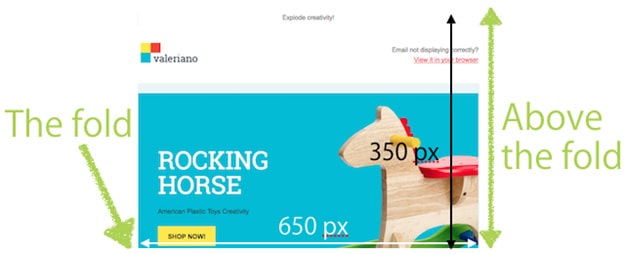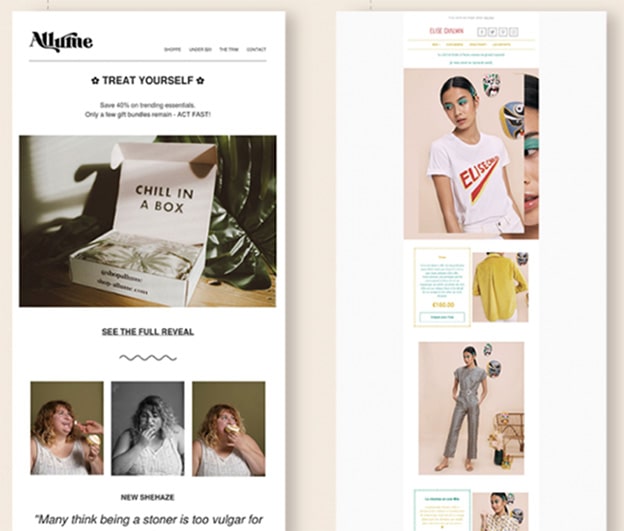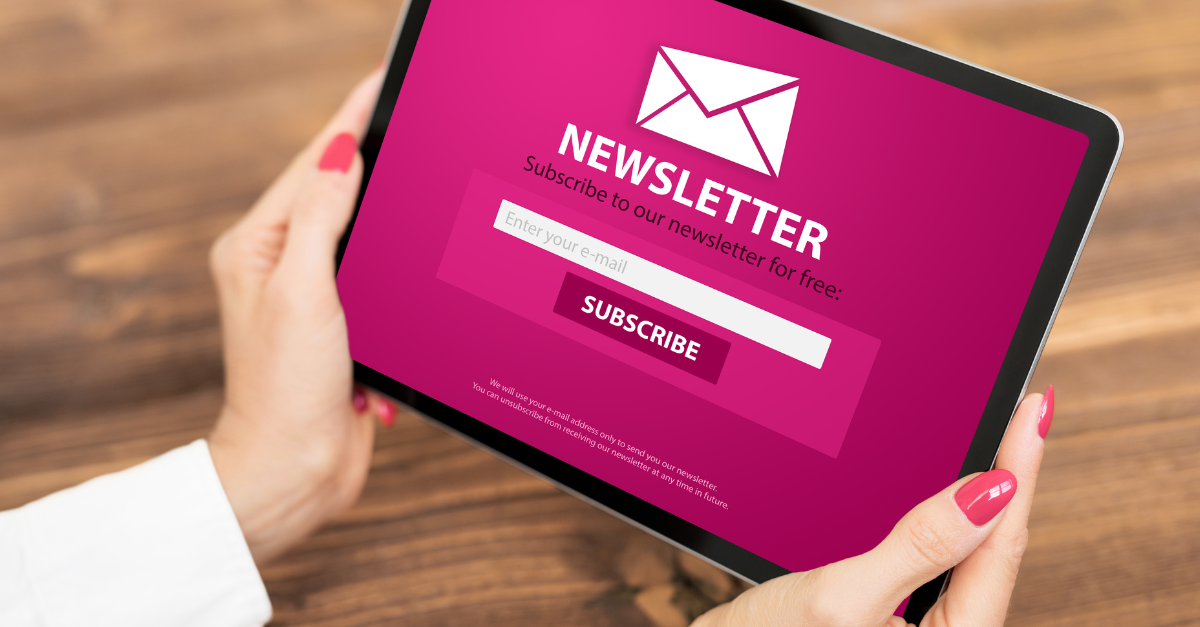Make an Appointment
Using email in your marketing strategy might seem like old news. But in fact, email marketing is still an incredibly effective strategy for building relationships and boosting sales. Still, it has to be done right or else you risk your emails becoming seen as spam.
Here, we’re exploring the benefits of a strong email marketing strategy, how to put together an email marketing campaign, and where to start.
Advantages of Using Email Marketing
Email marketing has many benefits for small business owners. Email marketing can be used for:
- Building relationships
- Increasing brand awareness
- Promotions
- Lead generation
- Sales funnels
Email marketing is one of the most powerful digital marketing tools because when your customers subscribe, they’re giving you a badge of trust that goes deeper than just interacting with them on social media or elsewhere on the internet.
Email marketing allows you to connect directly with your audience without the need for a middle man. You own that audience and it’s more in your control than a third-party algorithm.
How effective is email marketing?
To give you a clear idea of how effective email marketing really is, the statistics below should convince you.
- There are 3.9 billion active email users
- On average, email marketing has a 3,800% ROI
- Two-thirds of customers make a purchase through email
- Email beats search engines by 15% and social media by 22%
- Over 90% of consumers check their emails daily
- 86% of consumers prefer to receive promotions via email once a month from brands they subscribe to
So, with this data in mind, how can you get started with email marketing straight away?
Basics of Email Marketing
To help you get started, here are some basics of email marketing and important terms you should know.
What is the fold?
The fold is a term taken from traditional newspapers. The most important information would be placed on the front page, above the fold. It’s the information that people don’t have to take action (in other words, unfold the paper) to read.
In email marketing terms, this means that the most important information should be available “above the fold,” without requiring the user to do any scrolling.
The “above the fold” area in a marketing email is about 320 pixels high and 650 pixels wide. That’s all the space you get to create an impression and get your subscriber to scroll down and read the rest of your email.
Image Source: freshmail.com

Calls to Action
Calls to Action, commonly known as CTAs, are an extremely important aspect of email marketing. Actually, they’re important in all marketing strategies and they shouldn’t be ignored when it comes to email.
CTAs show the customer exactly what to do. Common CTAs include:
- Shop Now
- Sign Up
- Join Us Today
- Book an Appointment
- Check It Out
- Add to cart
A strong CTA not only entices your customer but also makes the decision for them. After all, people probably aren’t reading your email in full. They’re skimming through to see what action to take and having firm CTAs helps guide your customers on a journey based on your goals.
Image Source: omnisend.com

How long should a marketing email be?
One of the biggest questions you might have is how long you’re marketing emails should be. Well, it depends what kind of emails you’re sending and what content you’re promoting.
In general, keep your emails clear and concise. No big chunks of text and stick to a few promotions at a time instead of plugging everything you offer.
You might do some A/B testing to try out various lengths and styles to see what gets more click-throughs. Then, once you know what works, you can create a template for yourself and plug in the relevant details for each email.
How to Create an Email Marketing Campaign
Creating an email campaign can become super complicated. So, start slow and build your email marketing strategy with the basics. Once you get those right, you can start getting fancy with targeted funnels and more intense analytics.
Still, you can get started with what’s important right now using the following steps.
Define Your Target Audience
First thing’s first, before you start sending your emails, you’ll need to figure out who you’re talking to and what they want from you.
Does your audience want discounts, a simpler way to shop, or perhaps more information about your industry? Knowing your audience is key to any strong marketing message.
Set Goals
Next, setting goals helps you strategise effectively and gives you something to aim for. Maybe you want to increase sales, connect with previous customers, or share news about your company.
You’ll also want to have clear targets such as a specific number of event sign-ups or 50% more customer journey completions.
Generate Leads
Now you’re ready to build your contact list and earn subscribers. Generating leads is arguably the most difficult part about email marketing but there are some best practices to make it less strenuous. Start with creating the following:
- Landing pages
- Website pop-ups
- Social media posts
- Sign up forms on website headers or footers
You might also use lead magnets that entice your customers into signing up for your email list. Common lead magnets include free resources like:
- Ebooks
- Blog posts
- Infographics
- Course
- Workshop
- Downloadables
When people go to view your free resource, ask for their email address and add them to your contacts. But, it’s not always that easy.
People are stingy with giving out their email. So, a strong opt-in page is also an important step in building a successful email marketing campaign.
Legally, subscribers will have to opt-in to receive your emails. So, right from the get-go, you must offer them something of value in return. That’s where the lead magnets help. But even more so, you’ll need a strong opt-in message to ensure trust and follow-through.
The copy on your opt-in form should be clear and relevant. It shouldn’t come across as sneaky or false. You should, for example, always mention that you won’t spam them after they sign up and then actually keep that promise.
You should also set your opt-in process to have a double opt-in system. That means users will receive a confirmation email where they, again, will have the option to opt-in.
When subscribers take these actions to opt-in twice, they’re communicating that they actually want to hear from you and helps you build a stronger audience.
Choose an Email Type
From there, you’ll want to choose an email type to send to your subscribers. The email type that you choose should make sense with your brand and work to achieve your marketing goals.
A few of the most common email types you might choose from include:
- Email newsletters
- Product announcements
- Store discounts
- Industry news
- Letter from the editor/founder
In some cases, it might make sense to do a combination of email types. For example, your email might include a new product launch and a relevant blog post. Or, your email might be a letter from you with links to relevant services or articles.
Again, don’t try to pack everything into your email. Add lots of links and CTAs instead.
Best Times to Send
Another decision you’ll need to make in you’re email marketing strategy is how often to send email marketing and when. That’s where building an email marketing schedule comes in handy.
The truth is, the best time to send marketing emails depends on your audience. So, again, you can do a bit of A/B testing to figure out which times get the most opens, click-throughs, and ROI.
But, probably more important, is sticking to your schedule and being as consistent as possible. You might stick to a weekly email on Fridays or a daily email every morning. You can even do a monthly email on the first of each month.
Keeping up with a schedule not only helps you stay organised, but it also helps make sure your subscribers don’t forget about you.
Analyse Results
Last but not least, you’ll want to measure and analyse your email marketing results.
Most email marketing platforms like Mailchimp or Constant Contact have detailed analytics that let you know how many of your emails were opened, how often people clicked through your links, and when users unsubscribe from your list.
It’s important to reassess your strategies using the data from these programs to make sure your email marketing is truly working for you.
Email Marketing Templates
A great way to get excited about starting your email marketing campaigns is by finding email templates and examples of emails that work.
Reallygoodemails.com has countless examples of high-quality email marketing ideas to check out for inspiration. With ideas for every type of email and goal from newsletters to customer retention, it’s an incredible resource if you’re new to email marketing.
Email is certainly not dead and if you’re not already using it in your marketing, the time is now to get started.
Date Published: Tuesday, July 16, 2024
Date Modified: Tuesday, July 16, 2024
Need to get into direct contact with ur Client Services team? We're all ears. Call our team directly on 1300 731 733




